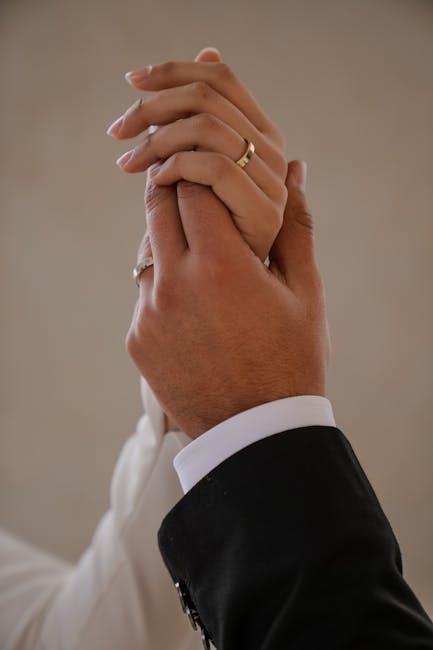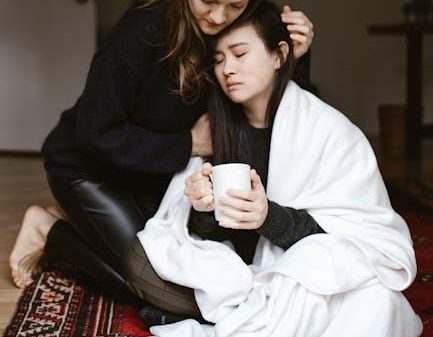In the vibrant tapestry of modern relationships, where love knows no boundaries and partnerships are forged on the anvil of equality, an age-old specter still lingers: traditional gender roles. These roles, deeply rooted in historical norms and cultural narratives, have long dictated the dynamics between men and women. But as society strides forward into an era of unprecedented change, a question emerges from the shadows: Are these conventional roles silently undermining the very relationships they once sought to define? In this exploration, we delve into the intricate dance between tradition and modernity, seeking to understand whether the age-old scripts of gender are harmonizing with or hindering the symphony of contemporary love.
Challenging the Blueprint: Unpacking Traditional Gender Expectations
In a rapidly evolving world, the rigid expectations of traditional gender roles often clash with the dynamic nature of modern relationships. These roles can create barriers that hinder personal growth and mutual understanding. For instance, when men are expected to be the sole providers, it may lead to undue pressure and stress, while women who are pigeonholed into caregiving roles may find their ambitions and dreams sidelined.
- Communication breakdown: When partners are trapped in predefined roles, open communication can suffer, leading to misunderstandings.
- Emotional suppression: Traditional roles often discourage men from expressing vulnerability, creating emotional distance.
- Unequal partnership: A lack of shared responsibilities can result in one partner feeling overwhelmed and unappreciated.
Challenging these conventions requires a conscious effort to embrace flexibility and equality. By recognizing the diverse strengths each individual brings, couples can forge partnerships that are resilient and deeply connected, transcending outdated norms for a more fulfilling relationship.
The Emotional Toll: How Stereotypes Impact Connection and Intimacy
In the intricate dance of human connection, stereotypes can act as invisible barriers, subtly yet profoundly affecting our ability to form genuine bonds. Traditional gender roles often impose rigid expectations, dictating how individuals should express emotions or engage in relationships. For men, this might mean suppressing vulnerability, prioritizing stoicism over openness. For women, it can translate to prioritizing caregiving roles, sometimes at the expense of personal ambition or emotional authenticity. These ingrained stereotypes can create a chasm between partners, hindering the establishment of true intimacy.
- Emotional Suppression: When individuals feel compelled to conform to societal norms, they may hide their true feelings, leading to misunderstandings and unresolved conflicts.
- Lack of Authentic Communication: Stereotypes often discourage open dialogue, fostering environments where assumptions thrive and genuine connection falters.
- Imbalance in Relationship Dynamics: When one partner is expected to fulfill specific roles based on gender, it can lead to resentment and imbalance, weakening the relationship’s foundation.
By challenging these stereotypes and embracing a more fluid understanding of gender roles, couples can cultivate a space where both partners feel seen, heard, and valued. This shift not only nurtures individual growth but also strengthens the relational bond, allowing intimacy to flourish beyond the constraints of traditional expectations.

Navigating New Norms: Embracing Flexibility in Roles
In the evolving landscape of modern relationships, the rigidity of traditional gender roles often clashes with the desire for a more fluid and equitable partnership. Flexibility in roles allows couples to break free from outdated expectations and embrace a more personalized approach to sharing responsibilities. This shift is not merely about splitting chores but about recognizing and valuing each partner’s unique strengths and preferences. As relationships become more dynamic, the ability to adapt and communicate openly becomes crucial. Couples can cultivate a harmonious balance by acknowledging that both partners can excel in areas traditionally reserved for the opposite gender.
- Enhanced Communication: Open dialogue about expectations and preferences leads to better understanding and collaboration.
- Increased Satisfaction: Sharing responsibilities according to individual strengths often results in greater happiness and fulfillment.
- Mutual Growth: Flexibility encourages personal and relational development, fostering a deeper connection.
As society continues to challenge conventional norms, embracing flexibility in roles can empower individuals to create partnerships that are both balanced and fulfilling. This approach not only strengthens the relationship but also supports the broader movement towards equality and inclusivity.

Building Stronger Bonds: Practical Steps for Evolving Relationships
In the journey of nurturing more profound connections, it’s essential to recognize and challenge the dynamics that may impede growth. Traditional gender roles, often ingrained in societal norms, can sometimes create barriers to genuine understanding and partnership. By fostering open communication and flexibility, couples can navigate these roles and cultivate a relationship that thrives on mutual respect and shared responsibilities. Here are some practical steps to consider:
- Communicate Openly: Establish a safe space for honest dialogue. Discuss expectations and feelings regarding roles within the relationship, ensuring both partners feel heard and valued.
- Embrace Flexibility: Roles should evolve as individuals and circumstances change. Encourage a dynamic approach where tasks and responsibilities are shared based on preference and capability, not tradition.
- Promote Equality: Make decisions together, valuing each partner’s input equally. This not only strengthens the bond but also ensures a more balanced and harmonious relationship.
- Challenge Assumptions: Regularly reassess and question any assumptions about gender-specific roles. This practice encourages growth and adaptability, vital for long-term relationship success.
By implementing these steps, couples can work towards dismantling outdated constructs and build a relationship framework that is inclusive, supportive, and resilient, paving the way for deeper, more meaningful connections.








